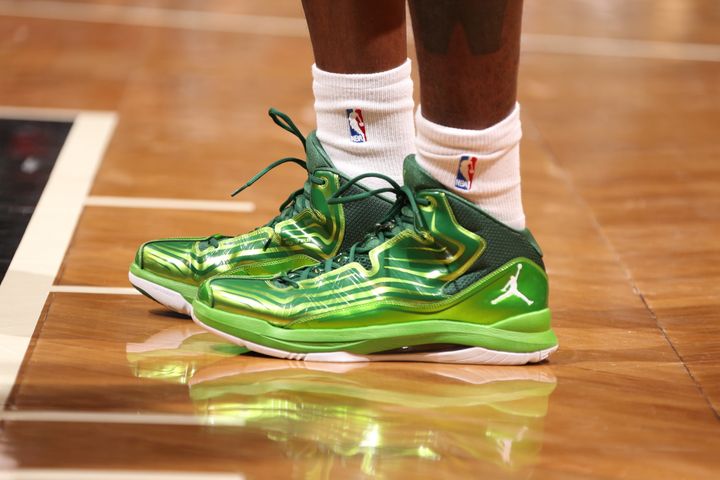
For basketball fans, this week marks one of the most important weeks of the NBA season, as teams make their final push to land a spot in the 2013 NBA playoffs. Scientists who may not otherwise be NBA fans, however, received an added bonus when tuning into this week's games, as for the fifth year in a row, the NBA hosted NBA Green Week presented by Sprint. In partnership with the National Resources Defense Council, throughout Green Week, the NBA utilized its platform to encourage NBA fans to go "green," while working to instill standards of best practice across the league.
NBA Green Week, which runs through April 12, saw the implementation of numerous exciting green facets, including players being outfitted in 100 percent organic cotton adidas shooting shirts, wireless device recycling events co-sponsored by Sprint and teams engaging in community events aimed at protecting the Earth. However, the most monumental effort taken by the NBA during this year's Green Week was the launch of Mosaic, an on-line tool designed to measure environmental impact, which was developed by the NBA in partnership with the NRDC and Renewable Choice Energy.
Utilizing Mosaic, the NBA and its teams will be able to track, analyze and identify cost saving opportunities within their environmental footprint. The league and teams will do this by relying on feedback provided by Mosaic to cut down on unnecessary energy, paper and water use, while also working to create more recycling opportunities. "Mosaic is designed to capture information about energy use, water use, paper use, waste and recycling. It will help arena operators notice their usage in these areas and hopefully, inform them of opportunities to reduce it," said NRDC senior scientist, Allen Hershkowitz.
It is expected that Mosaic, which took over one-and-a-half-years to develop, will provide the NBA and its teams with sustainability reports captured from the system twice annually. Notably, these reports will focus specifically on how much of an arena's energy use and waste development can be attributed directly to the NBA. This in turn, will allow NBA teams to adopt standards of practice directed specifically to their energy usage and waste creation. "Not all of an arena's activities relate to an NBA game. Arenas host NHL games, circuses, concerts and other events. What Mosaic will do, is analyze how much of an arena's energy use is attributed specifically to the NBA. The NRDC will then come up with an environmental profile of what the NBA's target footprint is," Hershkowitz said.
Calculating the NBA's target footprint is important, as it will not only allow teams to adopt standards of best practice to lower the impact of their footprint, but will allow teams to do so in a business savvy manner. One way in which the NBA and its teams are reducing their carbon footprints during NBA Green Week, is by purchasing carbon credits. For all 67 games held during Green Week, the NBA purchased carbon credits to offset the amount of electricity used during the games. While this will result in a carbon avoidance of more than 10 million pounds, Hershkowitz notes that by not using Mosaic to calculate the carbon usage during these games, the NBA may have spent more than necessary. "We had to estimate how much energy is consumed by a game. We did that conservatively, meaning that we overestimated how much energy is used. The NBA probably paid more than it needed to for the offsets. If we had the specific energy use data based on the Mosaic system, we'd know specifically how much energy each arena uses and they would have only had to purchase that number of credits," Hershkowitz explained.
The NBA's widespread adoption of environmentally conscious measures also translates into business opportunities for the league and its teams. Four years ago, American Airlines Arena -- home to the Miami Heat -- became LEED certified for existing buildings: operations and maintenance. As a result of this, the Heat reportedly saved $1.6 million in energy costs during the first year, while also bringing in approximately $1 million from new corporate sponsors who came on board as a result of the team's green efforts. "Being environmentally conscious improves our brand's image so that we now talk with companies that never would have approached us before, such as Johnson & Johnson and Georgia Pacific," said Jackie Ventura, the operations coordinator for the HEAT Group.
With big business opportunities looming as a result of greening efforts, the NBA shows no signs of slowing down the pace of its green endeavors. Yet, the NBA notes that when it comes to greening, it's not about making (green) dollars, but rather, serving a greater purpose. "For us, we look at this as a priority in terms of our commitment to social responsibility. David Stern says this is the only planet we're going to have, so we better start taking care of it. It's a priority in that sense, but also as a business mater. Our teams have demonstrated that they can be much more environmentally sensitive and friendly and make real changes in their operations. Our teams have embraced the notion that this is a priority for them because it's the right thing to do socially and also from a business standpoint," the NBA's executive vice president of social responsibility & player programs, Kathy Behrens, commented.
